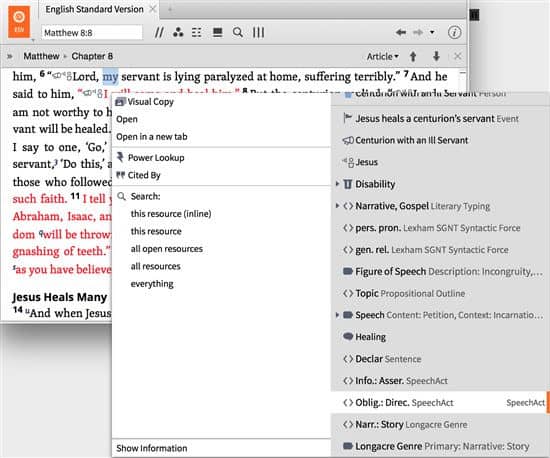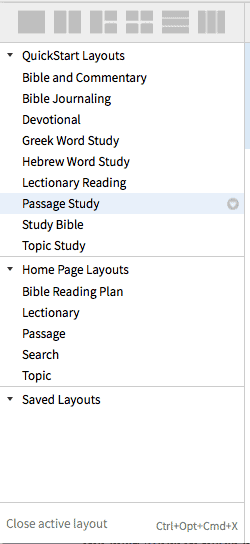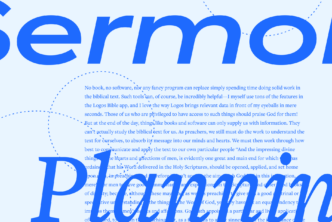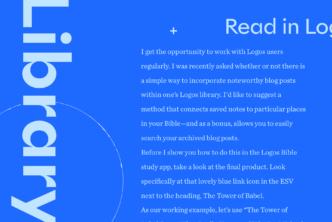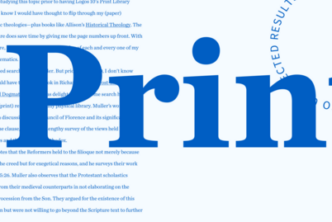By now, you’ve probably heard about exciting Logos 7 features like the Sermon Editor and the Courses Tool. These flagship features are so compelling, we have a confession to make: we haven’t given due attention to some other, just as helpful Logos 7 features and capabilities.
What these other capabilities lack in flash, they make up for in complete and utter utilitarian glory.
The Sermon Editor and Courses Tool aren’t the only reasons to give Logos 7 a look. Here are seven other game-changing Logos 7 capabilities.
Compare texts and customize your layout
For many of us, one of our first Bible study steps is comparing a few good translations. It’s amazing how many insights you can find just by seeing how different translators treated a given word. Since no translation is perfect, each one can add nuance to the text we’d miss if we were relying on a single translation.
Logos 7 adds new tools that help you compare Bible translations, or any resource, with ease. With Multiview Resources, scroll translations side by side and share highlights and Visual Filters within the same window. Click a word in one column, in whatever language, and Logos highlights the corresponding word in the others. And we’ve updated the Text Comparison tool to clearly distinguish verses and show more context. Plus, we’ve expanded Propositional Outlines to cover the entire Bible—so you can track the flow of thought of any passage.
In this clip from the Logos 7 live stream, Logos Pro Adam Borries explains the significance of Multiview Resources.
Visualize Scripture with interactive media
In November of 2015, I interviewed Faithlife’s Director of Video, Reuben Evans. Reuben had just returned from Israel, where he and his team had joined New Testament scholar Dr. Craig Evans on a tour of fascinating biblical archaeological sites. Not only did the team shoot footage for a pair of Mobile Ed courses on archaeology, they came back with the raw material for a brand new Logos 7 feature—an interactive, devotional experience unlike anything we’ve done before.
It’s called “An Empty Tomb,” and it’s an immersive, virtual exploration of a first-century tomb.
When I spoke with Reuben about the trip, he described how archaeology can bolster our faith:
Dr. Evans talks about this idea of “verisimilitude.” The idea is when you read in the Gospels about what the world of Jesus was like, then compare it to what we dig out of the ground, they look the same. They sound the same. These findings corroborate and add light to what we find in the Bible. It’s like bringing color to a black and white picture.
This new Logos 7 interactive does just that. It’s not merely a scholarly defense of the biblical record. It features uplifting devotional content from author, Logos Pro, and frequent blog contributor Mark Ward—thoughtful explorations of the significance of Jesus’ resurrection on everyday life.
The true power of this interactive comes from its self-directed, immersive nature. Enter the tomb for yourself and watch videos of Dr. Evans explaining the features. Navigate the tomb’s dusty ruins, find devotional and theological insights, and rediscover the significance of the resurrection.
See it in action.
This is just one of several new Interactives designed to help you visualize Scripture in stunning new dimensions.
Understand the intent of biblical authors
Logos 7 includes a number of features that make original language study more rich and accessible for everyone, from novices to experts.
Go beyond morphological searches with a new dataset marking all of the speech acts in the New Testament as well as every sentence type. Speech accomplishes more than the simple transfer of information. Human language always carries with it an intended result and at times can even create a new reality. For instance, when a pastor utters the words “I pronounce you husband and wife,” a new social reality exists for those involved.
The Speech Acts dataset captures and catalogs the volition or intent behind sentences within the New Testament. This makes it possible to find, for instance, commands within the New Testament even when there is no imperative verb within the sentence.
Leverage the power of grammar
Now you can go further with your exegetical investigation of grammatical issues. The new grammars section of the Exegetical Guide lets you surface results from your reference grammars by type or by language, and find every reference to your passage in all of your grammars.
Also, you can quickly identify passages with parallel grammatical features. For instance, now it’s easy to find every first-class conditional statement in every Pauline letter. This new dataset labels all instances of Granville Sharp’s first rule, conditional clauses, historical presents, articular infinitives, clause-level asyndeton, and Colwell’s Rule. You can even create a visual filter that highlights these constructions in your Bible of choice.
Check out the video for more.
Plus, you can link a lexicon to a Bible for one-click access to Greek or Hebrew lexical information. You’ll move seamlessly from the Bible you’re reading to expanded definitions and discussions of the original Greek or Hebrew word behind the English translation.
Discover eye-opening patterns in the text
With Logos 7’s Visual Filters, you can customize Logos to automatically highlight every time an original language word is repeated. Click, and watch as your Bible lights up with patterns hidden within the original languages, and identify key themes with just a glance.
See 2,000 years of theology on any verse
Glean wisdom from the church’s greatest theologians without breaking the flow of your study. New sections in the Passage Guide take you straight to the most relevant sections in your theological resources. Now you can see how the passage you’re studying has shaped theological thought across the centuries.
Results are even broken down according to the denominational affiliation of the author. For instance, now you can quickly see what Baptist, Lutheran, and Presbyterians theologians say about 2 Timothy 3:16 as it relates to the doctrine of the Bible.
Know where to start your next study
Even if you’ve been using Logos for years, finding your way around all of its many features can be daunting. There may even be some hidden gems you didn’t know Logos was capable of!
The simple fact is, you’re not going to use every single Logos feature in every one of your studies—the same way you won’t use every tool in your toolbox for every home project. (Friendly advice: don’t bring a hammer to a wrench job.)
The important thing is to have access to the right tool, for the right job, at the right time.
That’s why finding a layout that works for you is essential to finding focus for your study and having just what you need when you need it.
In Logos 7, you can get started fast with one of our new Quickstart Layouts tailored to different types of study and core Bible study tasks. Just select they type of study you want to do and Logos opens up everything you need to get started. Or create a Custom Homepage Layout to find the workflow that works for you.
***
There you have it: seven reasons to give Logos 7 a serious look. If you’re already enjoying Logos 7, what other features deserve to be on this list? Let us know in the comments.
And if you haven’t yet taken the plunge, give our Resource Experts a call at (888) 670-3148. They’ll help you find a Logos 7 option that fits your study and your budget. (We have payment plans available). Or visit our website for a personalized recommendation.

